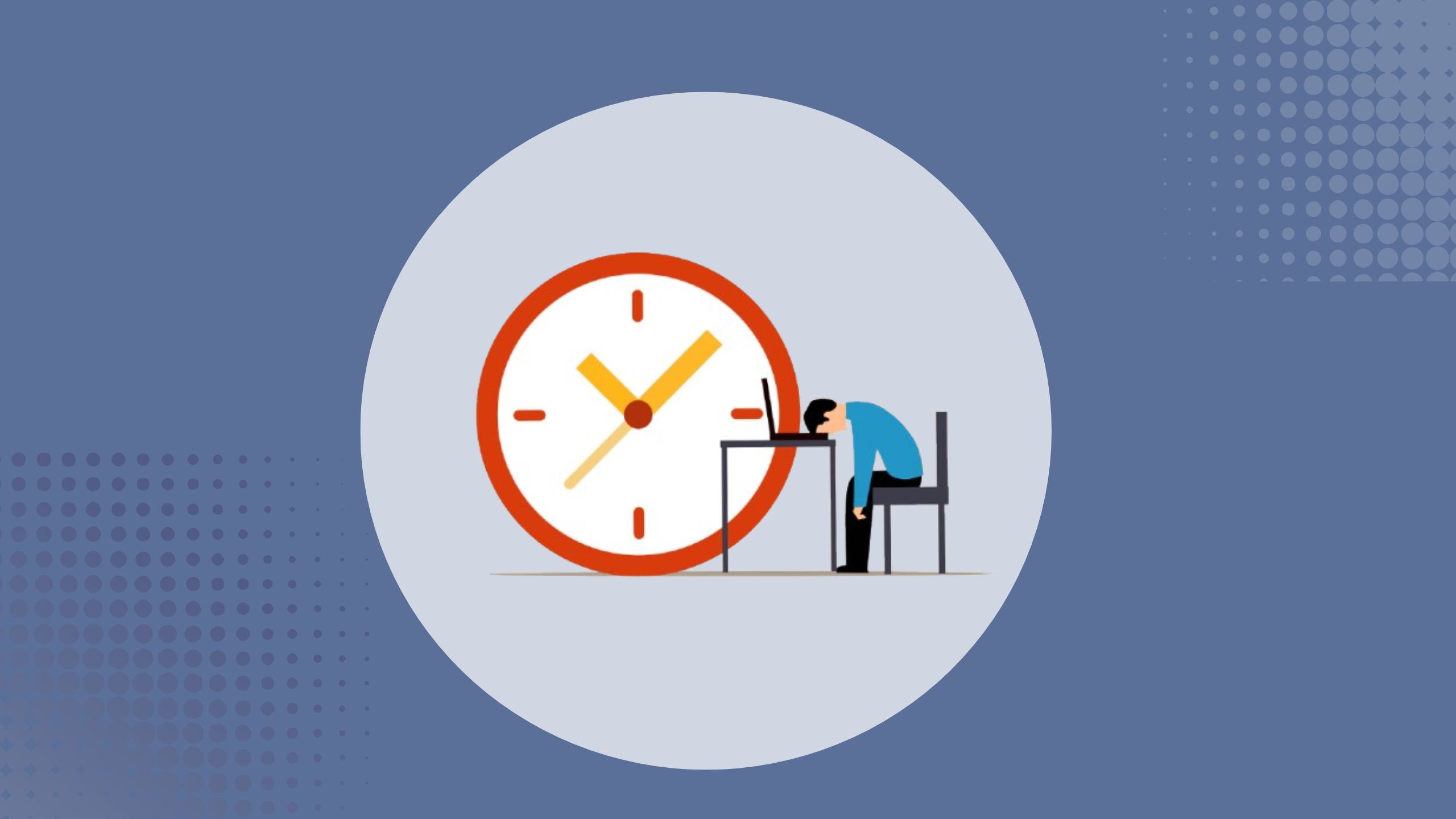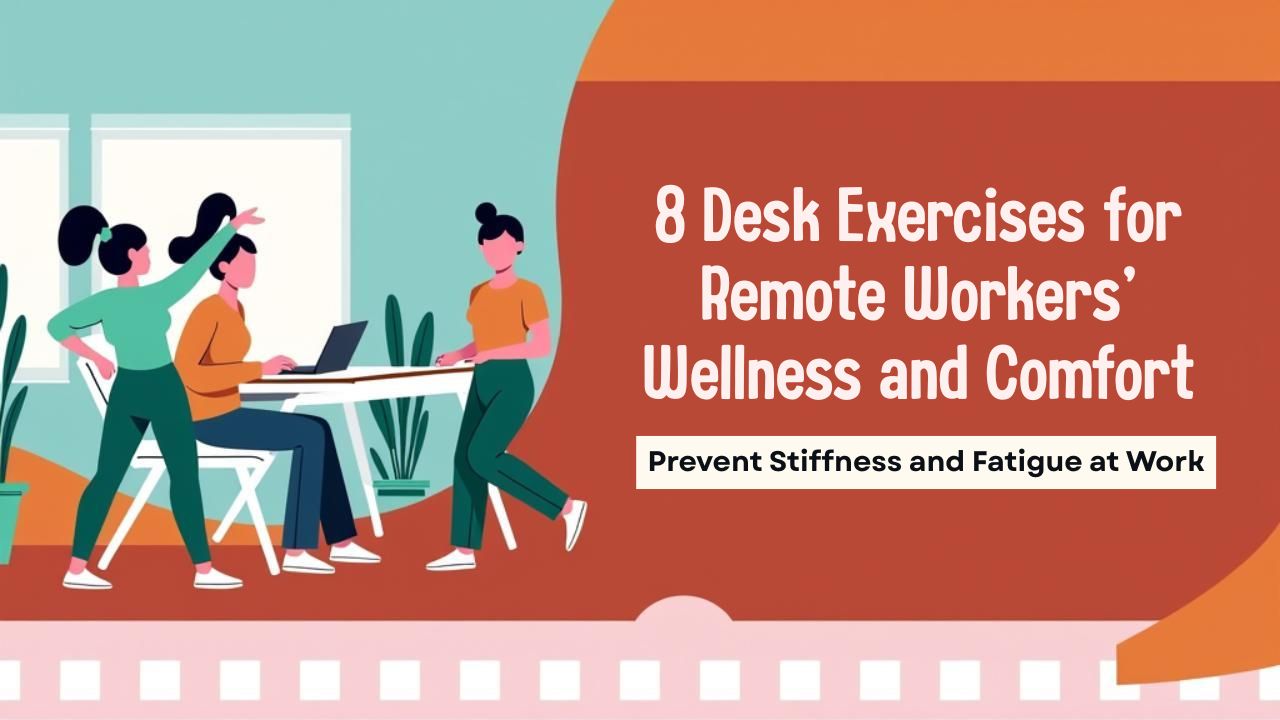All right, be honest, procrastination creeps in all too early when working from a home office. No commute, no manager walking by, and sooner than you know, reading that one e-mail or sprucing up that list of to-do items looks like climbing a mountain.
That’s where the 2-minute rule can be extra helpful. It’s a small psychological trick that can assist more readily in overcoming the habit of delay and getting going, now that working from a distance so readily turns “I’ll-do-it-later” so easily into “Uh, I forgot.”
Here, we’ll discuss what the 2-minute rule is, where/how it applies, and why we consider it one of the easiest techniques of getting beyond procrastination for a work-at-home setup. No new equipment or new ritual is required, but a shift of mindset beginning with two minutes, or even less.
How to Beat Procrastination With the “2-Minute Rule”
Let’s be honest procrastination doesn’t care if you’re working in an office or from your kitchen table. But for remote workers, it often hits harder. No boss peeking over your shoulder. No coworkers to hold you accountable. Just you, your screen, and that growing to-do list you keep promising to tackle… “after lunch.”
If this sounds familiar, the 2-minute rule might be the thing that finally helps you beat procrastination, especially in a remote work setup. It’s simple, effective, and surprisingly powerful.
What is the 2-Minute Rule?
The concept comes from David Allen, the productivity expert behind Getting Things Done. The basic idea is this:
“If a task takes less than two minutes to do, do it immediately.”
That’s it. No timers, no apps, no complicated productivity systems. Just a mental filter: Can I knock this out in under two minutes? If yes do it now. Not later. Not when you “feel more motivated.” Now.
This rule helps you build momentum. And in remote work, momentum is gold.
The beauty of the 2-minute rule is in how unpretentious it is. It doesn’t require a new app, a strict schedule, or some complicated productivity method. It just asks one question: Is this thing in front of me so small that I could finish it in the time it takes to boil water or send a voice note?
It works because it bypasses that mental tug-of-war we all have with ourselves the part where we spend more time dreading a task than it would take to just do it. The 2-minute rule sidesteps all the overthinking and turns productivity into a reflex rather than a decision.
And here’s the kicker: it’s not really about the two minutes. It’s about building a habit of starting. Often, we trick ourselves into thinking we need to feel “ready” or “in the zone” before we begin. The 2-minute rule flips that on its head. You act first then motivation tends to follow. It’s like giving your brain a running start.
What you’ll find over time is that this tiny rule doesn’t just help you clear small stuff it helps you approach bigger tasks with less hesitation. It conditions you to move rather than stall, and that’s exactly what you need if you’re trying to beat procrastination while working remotely.
Why the 2-Minute Rule Works So Well for Remote Workers
When you work remotely, it’s easy to fall into what I call “pseudo-productivity” answering a few emails, scrolling through Slack, opening a document but not really working on it. You feel busy, but you’re not making real progress.
Here’s how the 2-minute rule cuts through that fog:
- Kills the starting friction: Most tasks feel overwhelming until you start. Starting with something small gives your brain a win and gets the ball rolling.
- Reduces decision fatigue: You don’t spend time overthinking whether or not to do something. The rule decides for you.
- Keeps your task list clean: Small tasks don’t pile up into a monster to-do list you avoid all week.
Working remotely gives you freedom, but it also gives you friction the kind that shows up when your brain starts negotiating: Should I start this now? Maybe after coffee. Or after checking messages. Or maybe I should just clean up my desktop first…
Without the structure of a traditional office, it’s easy to drift. You’re not “on the clock” in the same way, and there’s no built-in transition between tasks like a walk down the hallway or a quick desk chat. That lack of natural rhythm can make even small decisions feel heavier than they are.

This is where the 2-minute rule fits in so well it creates mini-anchors in your day. When you apply it, you don’t have to map out a complicated strategy. You just scan for something quick and knock it out. It helps break that mental fog that can build up after hours alone in front of your screen.
Another thing that makes this rule work in remote setups is that it helps shrink your “mental to-do pile.” In a regular office, your brain gets breaks through interactions, meetings, and movement. At home, those breaks aren’t automatic. You’re left staring at the same list, which somehow keeps growing not because you aren’t working, but because the small stuff doesn’t get cleared fast enough. The 2-minute rule keeps those tasks from bottle-necking your attention.
It also lowers the emotional weight of starting your day. Instead of feeling pressure to jump straight into something big, you give yourself a gentle ramp-up. Knock out two or three fast tasks, and suddenly your brain thinks, Hey, we’re getting stuff done today.
And let’s not ignore the real-world stuff: when you’re working remotely, distractions are just part of life. Someone rings the doorbell. A package arrives. Your internet flickers. The 2-minute rule acts like a mental reset button. Once you’re back, instead of struggling to refocus, you can look around for something quick to do and just like that, you’re back in motion.
In a remote work environment where you’re fully in charge of your time, momentum is your best friend. The 2-minute rule helps you find it and more importantly, keep it.
In short, it’s a smart way to beat procrastination in remote work setups where structure is up to you.
What Can You Actually Do in 2 Minutes?
More than you think. Here are a few examples of tasks you can knock out quickly:
- Reply to a short email
- Send a Slack update
- Log your hours or tasks
- Save a file to the right folder
- Water your desk plant
- Set a meeting reminder
- Write down 3 bullet points for your next report
These tiny wins build momentum. And once you’re moving, it’s easier to tackle the bigger stuff.
How to Use the 2-Minute Rule to Build Better Habits
James Clear, author of Atomic Habits, adds another take on the 2-minute rule. His version: “When you start a new habit, it should take less than two minutes to do.”
The idea is to make habits so ridiculously easy to start, there’s no excuse not to. Here’s how that works:
- Want to start writing every day? Just open your notes app and write one sentence.
- Want to exercise? Put on your workout clothes.
- Want to read more? Open a book and read one paragraph.
The 2-minute rule isn’t just a productivity trick it’s also a great way to build habits that actually stick. If you’ve ever tried to start a new routine and gave up by the third day, chances are you made it too big, too fast. That’s where this rule quietly works in your favor.
Instead of focusing on the full version of the habit you want to build, you zoom in on the tiniest possible version of it something that takes no longer than two minutes to start. The logic is simple: it’s easier to stay consistent when you lower the entry barrier.
Let’s say you want to read more, but every time you sit down with a book, your brain taps out after a paragraph. Rather than forcing yourself to read 20 pages a night, you start with one sentence. That’s it. Open the book, read a line, close it. Sounds pointless, right? But what you’re doing is training your brain to show up. Once the “start” part gets easier, the rest usually follows.
Want to work out more? Don’t commit to a 30-minute routine right away. Instead, make your 2-minute version something like rolling out your yoga mat or putting on your running shoes. You might stop there, or you might keep going and that’s the magic of it. You remove the pressure to perform and focus on just starting.
This also applies to your remote work life. Struggling to write reports? Just open the doc and type the title. Having trouble keeping your inbox under control? Spend two minutes deleting spam or sorting unread messages. These tiny steps may not seem like progress, but they create a starting point. And starting points matter more than we think.
Over time, these small acts build a foundation. The goal isn’t to get everything done in two minutes it’s to establish the pattern of doing it at all. The 2-minute version of a habit is like a mental shortcut. Once it’s part of your routine, it takes much less effort to grow it into something bigger.
And if you’re worried this is too slow? Think about how often “all or nothing” thinking has slowed you down before. Most people give up on habits because they aim for big, perfect results right away. This rule gives you a way around that you’re not aiming for perfect, just consistent.
So, the next time you feel stuck or overwhelmed by some habit you should be building, shrink it. Ask yourself, “What’s the two-minute version of this?” Then do it. Keep doing it. Let that small win snowball into something bigger naturally, without the pressure.
Real-World Example: Tackling Your Remote Work To-Do List
Let’s say you’ve got a typical remote work day. You open your task list and it looks like this:
- Create project proposal
- Respond to 12 client emails
- Schedule Zoom call with team
- Organize Google Drive folders
- Update Trello board
- Follow up on invoice
Feeling paralyzed already?
Here’s where the 2-minute rule comes in. Scan the list and find what takes 2 minutes or less:
- Send the Zoom invite ✅
- Write a quick follow-up email ✅
- Move a Trello card ✅
- Drag client documents to the right folder ✅
Suddenly, four tasks are done. That builds momentum. You’ve started. You’re moving. And maybe now that proposal doesn’t feel so impossible.
How to Avoid Misusing the 2-Minute Rule
The 2-minute rule is simple, but that doesn’t mean it can’t be misused. In fact, once you start using it, it’s easy to fall into a trap where you think you’re being productive when really, you’re just avoiding the harder stuff.
One of the biggest mistakes people make is using the rule as a constant escape hatch. You bounce from one tiny task to another: replying to emails, cleaning your desktop, updating a file name, organizing bookmarks. Sure, all of that technically counts as “work,” but if you never move beyond it, you’re just spinning your wheels. It’s productivity theater activity without impact.
So how do you keep the 2-minute rule from becoming a form of procrastination in disguise?

1. Use It as a Warm-Up, Not a Distraction
The rule works best when it’s used to get into your workflow, not avoid it. A few small wins at the start of your day? Great. But if you’re still cycling through bite-sized tasks two hours later and haven’t touched your main priorities, it’s time to stop and refocus.
A good way to keep this in check is to cap your quick-task sessions. Give yourself 10–15 minutes to clear out the easy stuff, then shift gears even if you haven’t gotten through the whole list.
2. Don’t Pretend Everything Is a 2-Minute Task
Let’s be honest: a lot of tasks that look quick end up taking more time than we expect. You open a document to “just tweak a sentence” and 20 minutes later you’re deep into formatting and restructuring paragraphs. The danger is in misjudging telling yourself it’ll only take two minutes, when you know it won’t.
If something is going to balloon into a bigger job, either schedule it properly or break off a 2-minute piece you can do now. But don’t let the rule trick you into opening doors you don’t have time to walk through.
3. Make Sure It’s Leading Somewhere
The 2-minute rule should help you build momentum not keep you stuck in low-impact work. Ask yourself, Is this helping me move forward on something meaningful? If the answer’s no, you’re probably just checking boxes to feel busy.
Instead, try pairing your 2-minute tasks with a bigger goal. For example, if you’re writing a report, a 2-minute task might be jotting down the main bullet points. If you’re managing a remote team, it could be quickly reviewing today’s standup notes. Keep those small actions tied to a larger purpose.
4. Watch Out for the False Sense of Progress
This one’s tricky. Completing a bunch of small tasks gives your brain a nice hit of dopamine you feel accomplished, and that’s not a bad thing. But it can also be misleading. Don’t let that feeling convince you that you’ve made meaningful progress if you haven’t tackled anything substantial.
It helps to finish your day with a quick reflection: What did I actually move forward today? If all your answers fall into the “quick fix” category, it might be time to rebalance.

Quick Tips to Make the 2-Minute Rule a Daily Habit
Turning the 2-minute rule into a habit isn’t hard but it does take a bit of consistency. It’s not about doing it perfectly every time. It’s more about teaching your brain to spot those tiny tasks and act on them automatically, without overthinking.
Here are some practical ways to bake it into your daily routine:
1. Make It Part of Your Morning Setup
Before diving into deep work, give yourself a short window maybe 10 or 15 minutes to clear the decks. Look for a few quick wins: respond to that message, clear out a calendar notification, update your status on your team chat. These aren’t time-wasters; they’re like clearing clutter before cooking. You create a clean space to focus.
It sets the tone for the day, and helps you avoid the mental buildup of little tasks that could otherwise nag at you all day.
2. Use Visual Cues to Remind Yourself
Post-it notes still work seriously. A small sticky note on your monitor that says “2 minutes? Do it now.” can be enough to nudge you. Or use digital cues: set a phone alarm with a custom label that reminds you to scan for quick tasks every afternoon.
It’s not about nagging yourself; it’s about creating a small pattern interruption that reminds you, Hey, some of this stuff could already be done.
3. Pair It With Something You Already Do
One of the easiest ways to turn any behavior into a habit is to connect it with something you’re already doing. For example:
- After you finish a Zoom meeting, take two minutes to log any action items.
- After lunch, look for one small task you can knock out before jumping back into deeper work.
- When you open your inbox, ask yourself: Is there something in here I can handle in two minutes or less?
Over time, it becomes second nature like brushing your teeth before bed.
4. Don’t Wait for Motivation Act on Cues
A lot of people wait until they “feel like it” to do something productive. That’s a trap. Motivation is unreliable. Instead, treat the 2-minute rule like a mini reflex. If something pops into your head a task, a follow-up, a reminder and it feels manageable, do it. Don’t overthink it. Just act.
It’s kind of like swatting a fly. You don’t sit and plan out how to do it you just respond.
5. Create a 2-Minute Task List (And Keep It Handy)
Sometimes you have downtime between calls, while waiting for a file to load, or during those awkward 10-minute gaps in your schedule. Have a running list of 2-minute tasks you can pull from when those moments show up.
This helps avoid scrolling aimlessly or defaulting to passive distractions. You’re still being productive, just in a lightweight way.
6. Track Your Wins (at Least for a Week)
If you’re trying to turn this into a habit, it helps to see how much it’s actually working. For a week, jot down every 2-minute task you complete. You’ll be surprised by how quickly they add up. It’s a confidence boost and proof that small things do make a difference.
You don’t need a fancy system. A notebook, a sticky note, or even a running note on your phone will do. Just seeing that list grow can reinforce the habit.
Building the 2-minute rule into your day doesn’t require a complete shift in how you work. It’s more about small nudges little reminders and habits that train your brain to stop hesitating and just handle the easy stuff when it shows up. It’s a simple mindset shift, but once it clicks, it can reshape how you approach your entire workday especially when you’re managing your own time remotely.
Extra Tools to Help You Stay on Track
If you need a bit of digital backup, these tools can help:
- ✅ TickTick – Offers a built-in Pomodoro timer and task tracking
- ✅ Todoist – You can tag quick tasks and knock them out in “quick wins” mode
- ✅ Focusmate – Partner with someone virtually to stay accountable for even short sessions
Want to learn more about James Clear’s version of the rule? Check out this blog post from him.
And if you need a deeper dive into remote productivity hacks, this post from Zapier is a solid read: Zapier’s Remote Work Guide
Conclusion
Procrastination isn’t about being lazy it’s often about not knowing where to start. The 2-minute rule removes that friction. It gives you a mental shortcut that gets you into motion.
Especially if you’re trying to beat procrastination in remote work, this small trick can be a game-changer. Try it out for a week. Notice how those quick wins make the rest of your day smoother. And before long, you might find yourself getting more done with less effort and stress.




